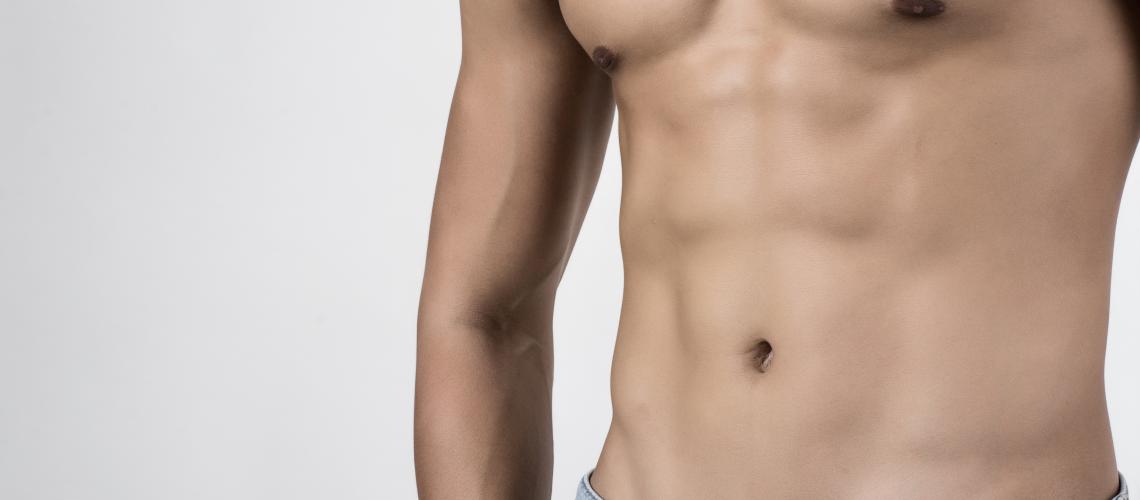Men - Dr. Hussein Aburumman
Men
Plastic surgery is not the exclusive for women only. You are a man and you want to sculpt your body or lose a few kilos, discreetly? Yes, it is possible.
Top three procedures for men
- Gynecomastia (Male Breast Reduction)
- Tummy Tuck
- Liposuction
- Non-Surgical procedures.
Gynecomastia (Male Breast Reduction)
Gynecomastia (guy-nuh-koh-MAS-tee-uh) is an increase in the amount of breast gland tissue in boys or men, caused by an imbalance of the hormones estrogen and testosterone. Gynecomastia can affect one or both breasts, sometimes unevenly.
Newborns, boys going through puberty and older men may develop gynecomastia as a result of normal changes in hormone levels, though other causes also exist.
Generally, gynecomastia isn’t a serious problem, but it can be tough to cope with the condition. Men and boys with gynecomastia sometimes have pain in their breasts and may feel embarrassed.
Male Breast Reduction with Tissue Excision
More severe cases of gynecomastia may require surgical tissue excision to achieve optimal results. Additionally, patients who have stretched, sagging skin around the breasts will usually require this approach. Tissue excisions allows a cosmetic surgeon to remove a greater amount of glandular tissue and/or skin that cannot be successfully treated with liposuction alone.
The location and length of the incisions depends on the extent of surgery needed, but are typically located around the edge of the areola (peri-areolar incision) or within the natural creases of the chest. A trained, qualified cosmetic surgeon will take care to place incisions so that the resulting scars are as inconspicuous as possible.
Male breast reduction with tissue excision is typically performed as an outpatient procedure using general anesthesia or local anesthesia with sedation. The recovery process is similar to that for liposuction; however, it is common for patients to experience soreness and some swelling. Typically, patients feel ready to return to work within 1 week of surgery, and a gradual return to exercise is usually permitted after the first couple of weeks.
Risks
Gynecomastia surgery risks include:
- Reactions to tape, suture materials, glues, topical preparations or injected agents
- Anesthesia risks
- Bleeding (hematoma)
- Blood clots
- Breast asymmetry
- Breast contour and shape irregularities
- Changes in nipple or breast sensation may be temporary or permanent
- Damage to deeper structures—such as nerves, blood vessels, muscles and lungs—can occur and may be temporary or permanent
- Deep vein thrombosis, cardiac and pulmonary complications
- Fatty tissue found in the breast might die (fat necrosis)
- Fluid accumulation (seroma)
- Infection
- Persistent pain
- Poor wound healing
- Possibility of revision surgery
- Unfavorable scarring
Procedure duration
The procedure usually takes about 1 or 2 to complete, depending on the amount of tissue to be removed.
Anesthesia
Gynecomastia surgery is performed under general anesthesia.
Recovery
The recovery time required for Gynecomastia surgery is 4 to 6 weeks, obviously depending on the recovery pace and your health condition. Surgeons usually recommend the first two or three days of total rest so that the healing process does not get disrupted. Immediately after the surgery, you might face some uneasiness, pain, tightness or tenderness in the operated area. But gradually after a week or so, these will go away. You might have to visit your surgeon to remove the stitches after a week.
Post-procedure care
However, you have to follow the instructions as suggested by your surgeon to gain a healthy speedy recovery and to avoid complications.
- Diet- Immediately after the surgery the patients are recommended to take clear fluids and then gradually switching to solid diets. It has to be made sure that the patient takes a regular meal with plenty of water content in it. You can add fruit juice, soft drinks to prevent dehydration. Alcohol must be strictly prohibited for 72 hours before and after the surgery. Avoid Smoking and Alcohol.
- Activities- The more rest, the better will be your surgical recovery. In the first twenty-four hours post surgery, it is recommended for not doing any strenuous activity like driving or operating the heavy machinery. Later on from the second day, you must take brisk walks that can help you in quick recovery. You do not have to stay in the bed the whole time. On the second day or third, you can drive and engage yourself in moderate activities but never any strenuous activity like gym, aerobics, running or swimming. You have to keep increasing your daily activities day by day gradually without going beyond your tolerance level. However, people normally go back to their office after 2 or 3 days.
- Compression garment- During the recovery period the most highly recommended thing is wearing a compression garment. Wearing this will help reduce the swelling and bruising and will improve the aesthetic outcome. The compression garment is to be worn twenty-four hours for the first week post surgery. In the second week, reduce it to 18 hours a day. The cleanliness and hygiene of the compression garment must be maintained properly to avoid infection. Wash off the garment in cold water and dry it. After three weeks you can replace your compression garment with any comfortable wear.
- Medication- During the entire recovery period do not take medicines like aspirin, ibuprofen. These might interfere with the blood clotting system and will increase the chances of rising complications. However, you can take a daily dose of multivitamin or vitamin E tablets.
- Be careful- You have to be very careful about taking already prescribed medicines. You are supposed to start them after two days or 48 hours of the surgery. You should also stop drinking alcohol and smoking before and after three days of the surgery. Activities like this will reduce the blood flow and start creating complications.
Note: For more information about other procedures you can visit Procedures Page

